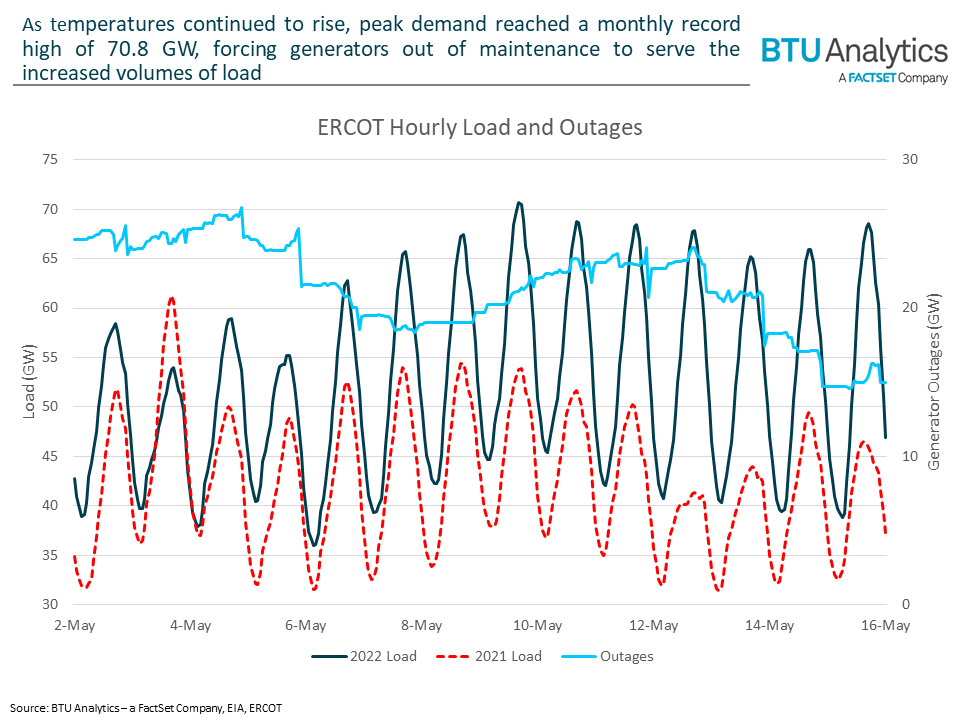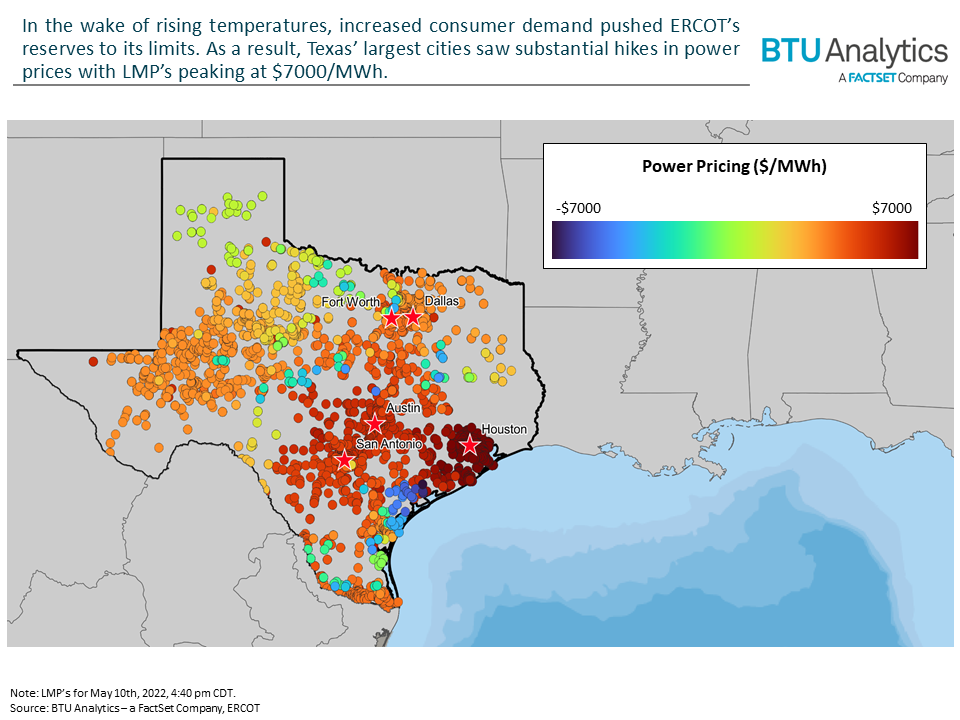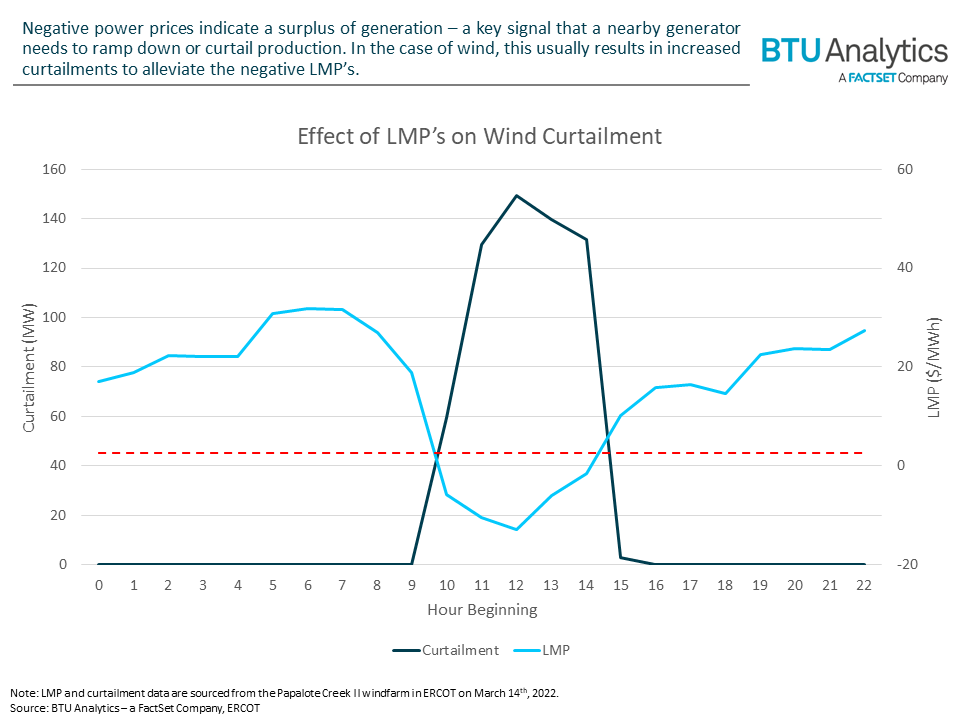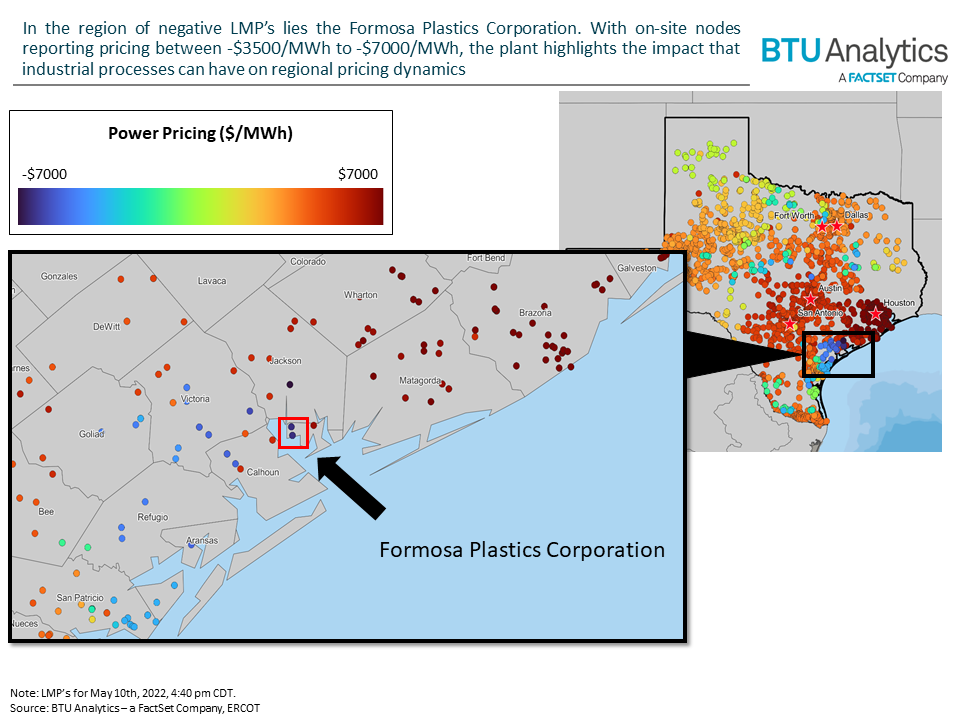While a spring heatwave surged across the U.S., rising temperatures have sent ERCOT’s electricity market to extremes. As residential demand for cooling increases, ERCOT has found itself unprepared for the unseasonably high volumes of load so early in the summer season. The state has called upon its residents to reduce electricity consumption as peak demand reaches monthly record highs. Consequently, prices for electricity have soared, reaching the system-wide offer cap of $7000/MWh while other areas saw equally extreme negative pricing. In today’s Energy Market Insight, we will discuss the current situation in ERCOT and external factors that are contributing to the severe pricing events.
With spring routine maintenance underway for many generators, during the first two weeks of May ERCOT has been operating with reduced reserves while increased demand pushed load to monthly record highs.

At limited capacity, ERCOT struggled to find the reserves to meet the monthly record peaks that were set over the course of last week. Reaching a peak of 70.8 GW, reserve margins fell dangerously low, causing system wide prices to soar.

While LMP’s reached the system-wide offer cap, an entirely different scenario was unfolding in southeastern Texas where prices hit extreme negative values.
Under normal circumstances, negative power prices in ERCOT are driven by wind farms with the production tax credit (PTC). Dependent upon the vintage of the plant, wind generators can claim a $/MWh credit that allows them to remain economic when LMP’s are negative. As the surplus increases, prices will continue to decrease but re-stabilize as generators ramp down or curtail production in response to the market signal.

However, negative pricing that results from wind generation and the ensuing congestion usually stays above -$30/MWh. In the case of southeastern Texas, LMP’s dropped to -$7000/MWh – a clear deviation from typical negative pricing events. This phenomenon provokes the question of what other factors might be influencing pricing in this region?

At the heart of the negative pricing lies the Formosa Plastics Corporation, a large petrochemical plant with co-generation. Formosa Plastics’ 2,300-acre facility houses five business units: olefins, polyolefins, vinyl, specialty polyvinyl chloride, and chlor-alkali. Recently, the company invested $5 billion to build a new ethylene cracker and expand its polyethylene production capacity. Ethylene, one of the most important feedstock chemicals for the global economy, is derived by “cracking” raw ethane feedstock with steam at an energy-intensive 1,500 degrees. During this peak power event on May 10th, transmission congestion played a major role as there was over a $14,000/MWh spread between the positive prices in Houston and the negative ones 80 miles away in Calhoun County Texas. On that afternoon, the value of the steam for the Formosa petchem business outweighed the cost of extreme negative power prices at the plant.
As ERCOT and the rest of the country continue to navigate through extreme temperatures with increasingly intermittent generation, ‘typical’ dynamics will be challenged. Pricing trends around Formosa provide the latest example of this and will surely not be the last. Formosa illustrates that to understand what is happening in Texas and across the world’s energy markets requires a cross-commodity understanding that BTU Analytics and FactSet can provide. To see BTU’s growing breadth and depth of energy coverage, email info@btuanalytics.com to set up a discussion.








